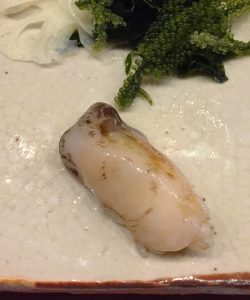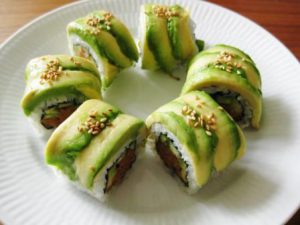Authentic Japanese sushi is very different. It is very simple in its expression and tastes different from what is served in Europe.
In Japan all types of fish are used for sushi which means that the menu card offers many different kind of fish.
The biggest difference between European and Japanese sushi is the techniques used to make sushi. In Japan it is normal to use techniques that take 20 years to master.
Below you will find a few sushi pictures from the 2 star Michelin restaurant Taku.
 –
–
 –
–
 –
–

Read more about Sushi chef & sake sommelier Zoë Escher
_
Zoë has lectured and held sushi courses for A. P. Moller – Maersk, Hugo Boss Nordic, Novo Nordisk, Novartis, Velux, Gorrissen Federspiel, Beierholm revision, Elbek & Vejrup and many more.










